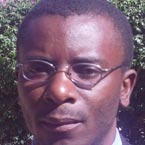
“There is one thing stronger than all the armies in the world, and that is an idea whose time has come.” — Victor Hugo
BY Phillip Chichoni
Soichiro Honda, Japan’s own Henry Ford, was a born innovator and entrepreneur. Born in 1906, Honda spent his early childhood helping his father, a blacksmith, with his bicycle repair business. At that time bicycles were just getting popular.
One day, a Model T Ford car drove through Honda’s small village. That glimpse of a motor vehicle powered by its own engine became a life-changer. Honda began to think and an idea came into his head: that of a self-propelled bicycle.
In 1922, the love of automobiles inspired him to leave home at age 15 to apprentice at Art Shokai, an automobile repair shop in Tokyo. The shop’s owner saw in Honda a hard worker possessing technical expertise unusual in one with only an elementary school education. After completing his apprenticeship in 1928, Honda opened a branch of Art Shokai in Hamamatsu, with his new wife Sachi serving as bookkeeper and cook for the staff. Honda began building everything from dump trucks and a repair lift for cars to racing cars using old airplane engines, and began to dream of expanding into manufacturing.
Honda was a maverick whose best ideas emerged from the most pressing constraints. During World War II, when the Ministry of Munitions took control of his firm, he developed a technique for mass-producing wooden airplane propellers for the war effort that turned out two propellers every half hour as opposed to the week it previously took for one propeller to be hand carved manually. After the war, with petrol scarce, Honda, opened the Honda Technical Research Institute, where he built small 2-stroke, 50-cc modified engines that could be attached to bicycles.
In 1949, the Honda Motor Company released the first “Dream Type-D” motorised bicycle, made of pressed steel, because quality steel pipe was hard to come by, and painted maroon, a stylistic departure from the black paint of other motorcycles on the road. It was an immediate hit with the Japanese public. In 1953, the Honda C-100, followed, and it was that fuel-efficient diminutive bike that in 1959 became the world’s biggest selling motorcycle.
- Chamisa under fire over US$120K donation
- Mavhunga puts DeMbare into Chibuku quarterfinals
- Pension funds bet on Cabora Bassa oilfields
- Councils defy govt fire tender directive
Keep Reading
We are currently going through very challenging times economically. This presents entrepreneurs with opportunities to come up with new ideas to solve the problems we are facing. Just after the Reserve Bank of Zimbabwe governor John Mangudya announced the introduction of new “bond notes”, money changers rushed onto busy pavements to mark their territories in anticipation of the re-emerging of a black market for cash.
We need to think of far more innovative ideas if we want to make progress as entrepreneurs. Ideas, ideas and more ideas.
Ideas are responsible for the progression and prosperity of humans — without them we would still be living in prehistoric times. No idea is too small, and all sorts of ideas have potential to change the world as we know it for the better. Honda started with one idea for a motorised bicycle; today Honda makes all sorts of vehicles and equipment, not just motor cycles, and it is one of the biggest companies in its industry.
Ideas do not come from thin air. They appear when there is a pressing constraint that needs a solution. The process of creating ideas involves organised thinking similar to problem solving and is an essential skill as we all encounter problems on a daily basis. Like all other skills, problem solving and idea generation improve with repeated practice.
Idea generation can be undertaken as an individual or in a group setting. It involves coming up with many ideas, selecting the best ones, working to create a plan to implement the idea, and then actually taking that idea and putting it into practice. The idea can be tangible, something you can touch or see, or intangible, something symbolic or cultural.
The more ideas you come up with — no matter how ridiculous some may sound — the more likely that some brilliant ideas will be generated. Write down the ideas that you come up with. Asses each idea to see if it is feasible, considering the resources at your disposal. Eliminate the unfeasible ideas and focus on the viable ones. Make a plan of action about how the idea will be implemented. It is a good idea to always put things in writing so that you do not forget important aspects, something that can easily happen when you are under various pressures, as is common in this environment. Set up a timeline and assign responsibilities for the outcomes.
Success will come when you keep on thinking of new and better ideas all the time. That is the first step to greater things. Instead of wasting time stressing over situations you cannot control, use your mind and energy more productively, thinking of new ideas and solutions. You will be surprised how your life will charge with positive energy and growth despite the chaos surrounding us.
l Phillip Chichoni is a consultant who helps SMEs and entrepreneurs build sustainable businesses. You may contact him by email, [email protected]. You can also visit www.admiralbiz.wordpress.com, or phone +263-4-700812.












